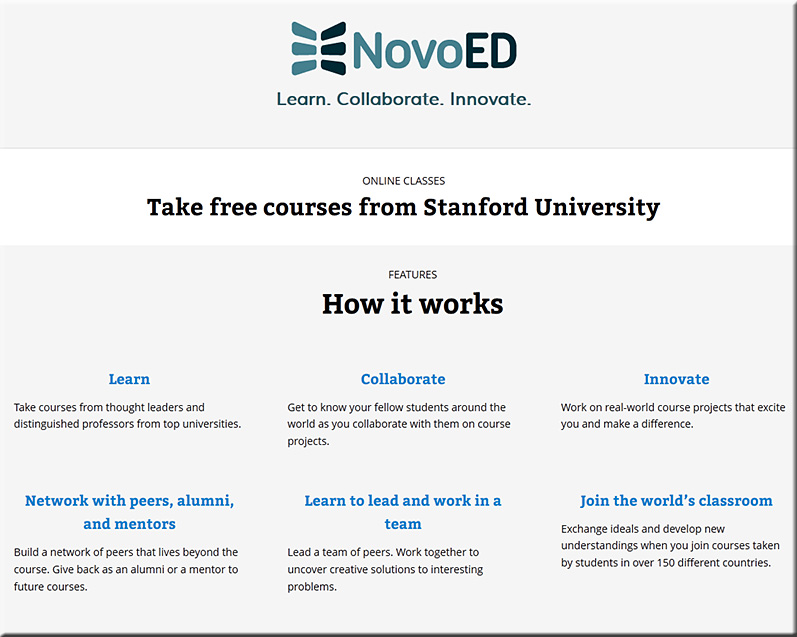
(Ok, a little early, but now that Michigan has experienced some warmer weather, I’m game!)
.
From DSC:
I’m honored to be part of a list of people/organizations who strive to help people become lifelong learners. I’d like to say thanks to Jimmy Daly, Tara Buck, and to those folks out there who are trying to help others build their own learning ecosystems!
The graphic below is from:
How strong is the business/IT relationship in your industry? — from Gartner.com by Mark P. McDonald; with thanks to Mr. Stephen Landry for putting this resource out on LinkedIn.
.

Apple Inc. (AAPL), Google Inc (GOOG), Amazon.com, Inc. (AMZN): Ecosystems are widening moats — from insidermonkey.com
Apple smartphone strategy: It’s the ecosystem — news.investors.com
The strength of Apple’s ecosystem remains its greatest asset and will secure customers and profits despite slowing growth and margin dips — from tbrnewsommentary.wordpress.com by Beau Skonieczny, Analyst
iPad continued to fuel growth and healthy margins for Apple despite headwinds
From DSC:
Those of us working in the tech side of the house know how difficult it is to navigate this space. The targets are always moving, and determining which tool to go with has changed through these last few years. It used to be about individual tools (and sometimes still is). But increasingly, one needs to fly at the 50,00-foot level and ask how the ecosystems are playing out and how an individual tool fits into a greater ecosystem or platform. Some ecosystems that come to my mind right now include: Apple, Google, Amazon, and Microsoft.
The IT conversation we should be having — from HBR.org by Jim Stikeleather
Excerpt (emphasis DSC):
It is a conversation about the increasing importance of information technology and the role it must assume in every enterprise, regardless of size, industry or geography.
…
Our observations:
- CEOs are demanding more visible value from their CIOs, in terms of generating revenue, gaining new customers, and increasing customer satisfaction.
- Increasingly, the CIO and IT must be seen less as developing and deploying technology, and more as a source of innovation and transformation that delivers business value, leveraging technology instead of directly delivering it.
- The CIO must be responsible and accountable if technology enables, facilitates or accelerates competition that the C-suite didn’t see coming, or allows the enterprise to miss opportunities because the C-suite did not understand the possibilities technology offered.
- CIOs today must adapt or risk being marginalized.
From DSC:
This is critical in the higher ed space as well!
The majority of the higher education industry still isn’t getting it — we are operating in a brand new ball game where technology must be used strategically. It’s not just about building and maintaining the infrastructure/plumbing anymore (though that is extremely important as well). It’s about the strategic, innovative use of IT that counts from here on out.
From DSC:
Steven VanderLeest maintains a blog called Deus Ex Machina (Latin for “God in the Machine”). The other day he wrote the words that I remember singing at First Prebyterian Church of Evanston many years ago. This morning, those words come back to me and I can’t help but post something in light of the situation that occurred last night and continues to occur this morning in Boston — an event which is all over the American media, but the type of event that regrettably occurs all too frequently throughout the world (bombings, killing, violence, hatred, evil, and more). My soul is troubled, heavy, and cries out:
Kyrie, eleison!
Christe, eleison!
Kyrie, eleison!
Lord, have mercy on us.
Christ, have mercy on us.
Lord, have mercy on us.
…and then the words come to my mind…”We are all in this boat together.”
About
NovoEd is the only online learning platform that provides a connected, effective and engaging learning environment for students using a combination of techniques in crowd sourcing, design and analysis of reputation systems, and algorithm design.
NovoEd’s philosophy is to advance the online learning experience by making online courses more experiential, interactive, and collaborative. On our platform, students not only have access to lectures by thought leaders and professors from top universities, but they are also able to form teams with people around the world and work on class projects.
NovoEd uses online learning to deliver learning opportunities at massive scale. We offer courses and programs by thought leaders in a wide range of fields and in partnership with universities. By fostering online collaboration, team work and project-based learning, we nurture problem solving, collaboration, and leadership while addressing specific topics and business opportunities.
I will give you a new heart and put a new spirit in you; I will remove from you your heart of stone and give you a heart of flesh.
.

Looking at a sampling (below) of the emerging technologies starting to hit the landscapes…
I am struck with the thought that, we need as many hearts of flesh out there as possible!
I hope that these types of very powerful technologies are used by people who care about each other and who respect the dignity of others; those who lift up and value life.
- Are we paying enough attention to information technology’s dark side?
Excerpt:
Technological power is not new, of course, but information technology’s exponential pace and declining cost is changing how the global game is played and who the players are. Control of technology is passing from the richest states and governments to smaller groups and individuals, and the results are both inspiring and terrifying. As Goodman says, “The ability of one to affect many is scaling exponentially—and it’s scaling for good and it’s scaling for evil.”- Pentagon to deploy more than 100 cyber teams by 2015
- The future of surveillance will turn society into a massive online game (Quick comment from DSC: While I dislike the title of this article, it’s very relevant to this posting.)
- A search engine for The Internet of Things (IoT)
Shodan, a little-known search engine, is the go-to site to find out about nuclear power plants control centers, gas stations, and highway signs connected to the internet.- 13-foot 12,000-pound mechanized robot suit now for sale in Japan
- This week in bots: The robots we build to kill for us
- Who’s responsible when robots kill? ‘We Robot’ Conference hunts answers
- The terrifying future is 3D printed weapons <– the dark side of 3D printing
and/or
This item on the DoD’s PETMAN project- For some, Google Glasses raise privacy concerns
As the launch of the latest interactive technology creeps closer, discussions about how the public will adapt have started to surface.- Facebook addresses Facebook Home privacy concerns
- Why Facebook Home bothers me: It destroys any notion of privacy
- Fake Twitter followers become multimillion-dollar business
- 3D scanner scans objects from over a half mile away, watches the grass grow
Dual screen: The evolution of the second screen — from blog.brightcove.com by Albert Lai
Excerpt (emphasis DSC):
Educational Gamification
In a previous post, we asked readers to suggest their ideas for dual screen applications. One of the more intriguing responses was the suggestion to create companion educational games to accompany associated video content.
In a dual screen experience, as video content is displayed on the television, the application can engage the viewer with relevant and education activities, from content reinforcement to spelling to trivia to memory “games.” One can imagine an interactive amalgamation of Dora the Explorer, Where in the World Is Carmen Sandiego?, and Schoolhouse Rock!

.
.
![The Living [Class] Room -- by Daniel Christian -- July 2012 -- a second device used in conjunction with a Smart/Connected TV](http://danielschristian.com/learning-ecosystems/wp-content/uploads/2012/07/The-Living-Class-Room-Daniel-S-Christian-July-2012.jpg)
Addendum on 4/8/13:
- First Quarter, 2013: Are we on track? An update to the definitive research “The 2nd Screen: Transforming video consumption”— from digitalvideospace.blogspot.com
Excerpt:
The first 3 months of 2013 has been explosive for 2nd Screen. Apps have improved, new apps have continued to launch, clear evidence of growth in the revenue associated with the market can be seen, and the convergence of 2nd Screen companion experiences and 2nd Screen viewing experiences has continued.



















